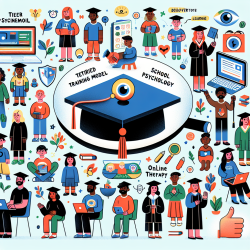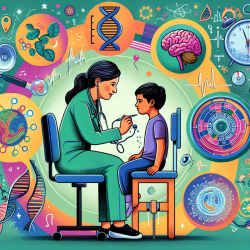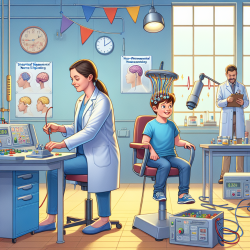Introduction
In the ever-evolving field of speech-language pathology, understanding the genetic underpinnings of autism spectrum disorders (ASD) can significantly enhance therapeutic approaches. The research article, "Modeling the functional genomics of autism using human neurons," offers groundbreaking insights into the transcriptional programs involved in human neural differentiation. This blog post will explore how practitioners can leverage these findings to improve outcomes for children with ASD.
The Power of Genomic Modeling
The study utilizes human neural progenitors (NHNPs) to model the molecular features of neurodevelopmental disorders like autism. By differentiating NHNPs into post-mitotic neurons, researchers observed significant changes in gene expression, including genes associated with ASD. This model provides a unique opportunity to study the effects of mutations in ASD candidate genes and assess potential therapeutic interventions.
Implications for Practitioners
For speech-language pathologists, these findings underscore the importance of integrating genomic insights into therapeutic practices. Here are some actionable steps:
- Stay Informed: Regularly review emerging research on genetic markers and pathways associated with ASD to tailor interventions more effectively.
- Collaborate with Geneticists: Engage in interdisciplinary collaboration to understand the genetic profiles of children with ASD, which can inform personalized therapy plans.
- Incorporate Technology: Utilize technology platforms like TinyEYE to integrate data-driven insights into therapy sessions, enhancing engagement and tracking progress.
Encouraging Further Research
While the study provides a robust framework for understanding ASD, it also highlights the need for continued research. Practitioners are encouraged to participate in research initiatives and contribute to the growing body of knowledge on ASD. By doing so, they can help refine therapeutic approaches and improve outcomes for children.
Conclusion
The integration of genomic insights into speech-language pathology holds immense potential for improving therapeutic outcomes for children with ASD. By embracing a data-driven approach and fostering interdisciplinary collaboration, practitioners can unlock new possibilities in autism therapy.
To read the original research paper, please follow this link: Modeling the functional genomics of autism using human neurons.










